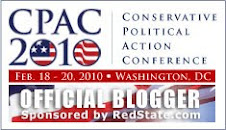
[Executive Summary: This is the first of an irregular series of essays about the United States Dollar--what it really is, and what the boys in Washington are doing with it and will do with it.]
This is a story about two coins.
It is also a story about my future and yours.
Let's start with the coin pictured above. That's a penny--i.e, a U.S. one cent coin. A rather battered 1839 "Large Cent, Coronet Type," according to R.S. Yeoman, the godfather of American coin collecting. The last "Large Cent" was made in 1859; starting in 1860 the Small Cent (present sized) replaced it.
This coin is in "Good" condition, as a coin collector would term it; it's in "crappy" condition, as you or I would say.
I got it at a coin shop this week for $5.00, pulling it out of a grab bag.
Let's look at the back:

Very simple: a wreath, UNITED STATES OF AMERICA, and ONE CENT.
Back in the old days, and I mean the OLD days, they used to produce "pennies" that actually contained about 1 cent (as valued then) in copper. They were about double the size of a present day penny, and about 3x present day weight. (Today's pennies, which are now made of zinc, are now very light and only weigh about 80% what pennies did five years ago.)
Now, let's look at this shiny NEW coin that the Federal Government is now releasing.

This is one of the new Presidential dollar coins--this particular one memorializes the general (some say war criminal) William Henry Harrison, known for his victory at the Battle of Tippicanoe... and for the fact that he died of pneumonia after spending only a month as President. He was elected President in 1840, the year following the minting of the penny above.
Let's now look at the back:

Admittedly not a great pic, but you get the idea: Statue of Liberty, UNITED STATES OF AMERICA, $1.
Now let's compare the two coins directly.

They're almost identical in size and weight.
And one more fact:
Compared to $1 of 1839 money (when the dollar was still backed by gold* and was worth $20.67 for an ounce of gold) the 1839 penny shown here had a buying power of about 25 cents in present day money.... or, in comparison to the present price of gold at $940.00 per ounce this instant... the 1839 penny was worth, today, about $0.445.
Now, what's the point of all this?
First, note that in this entire essay (until now) I never used the "cent" symbol of ¢ because it's no longer on my keyboard. Why? Two reasons: First, it used to be found over the number 6, where it has been replaced by a ^ carot symbol--largely because a cent ¢ is of so little value people don't generally even think in terms of 'cents' any more. You never see it at a grocery store, even; they use the "$.00" format. Even in pop culture, the term is corrupted (like the rap star known as "50 Cent", who doesn't even bother to use a plural).
Furthermore, about twenty years ago you first started seeing (Lincoln) pennies in little boxes at the store: "Take-a-penny-leave-a-penny." Today it's not at all uncommon to see nickels and dimes in the same pots. People don't bother with it any more. Only the quarter, it seems, is still taken seriously for any commercial purpose.
But more importantly, given the present inflated state of the dollar--which stands about $26.50 being needed to buy what $1.00 did in 1913--shoud the dollar undergo another period of heavy inflation (say, 40% inflation for two or three years) the buying power of the dollar and the original buying power of the penny shall be about the same.
And so, guess what? The U.S. will finally have brought back the Large Cent.
Not by that name, of course.
Next in this series: Gotta Holla About My Brand New Dolla



No comments:
Post a Comment
Keep your meme clean. Thank you.